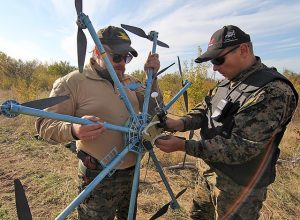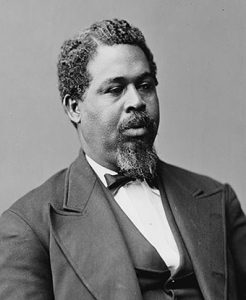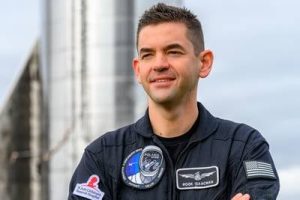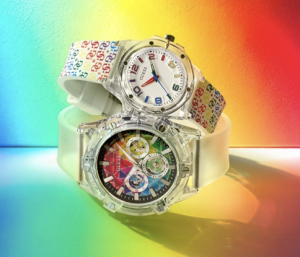Interview with Elsa Evripidou and Nick Fletcher, Co-Founders of Laid Back Films
For this interview, I caught up with the creators of a new storytelling format called cBooks, which combines books with cinematic content. Their pilot project is a story titled Monsoon Tide, a tale of a young woman who discovers a mystery surrounding her mother’s death in the backdrop of southern India.
Nick: Yeah, that’s how the whole C-book thing developed. We were a film company, we were shooting a film and the film was Monsoon Tide and the C-book idea was spawned from the time while we’re filming Monsoon Tide.
HH: What would an elevator pitch for Cinematic Books sound like?
Elsa: We know that some stories make some great books and we know some stories make great films, but sometimes you watch a film and you think something’s missing. You want to know a bit more about the characters. Sometimes when you read a book, you can’t really imagine a setting or what the characters look like.
With a Cinematic Book, we’d bring both elements together and so you’d get the best of both worlds. You’d read a chapter and then you’d watch a clip. You’re read a chapter, you’d watch a clip. Each segment propels the story forward. The written part, you can get inside the character’s head. You can understand their motivations. Obviously in the film part, you can see the lovely settings. You can see how the characters interact, what they sound like, so you’re bringing the best of both into one product.
Yeah, that’s basically it.
HH: What inspired this idea to combine film and a book format?
Elsa: Okay, Nick was the one who got inspired, so I will let him explain.
Nick: I’m a screenwriter and whenever I write a film, I have reams and reams of back story of each character. I have to do that. And it gets increasingly frustrating.
With Monsoon Tide, I had so much good back story, that I knew wouldn’t appear in the finished film, because you just don’t have the minutes for it. That’s frustrating. I thought—I had a what-if moment. What if I could do that somehow? There must be a way. But I had a screenplay to finish and I parked the idea and went off to make the film.
Now, while we’re at it in India and I was speaking with the actors and rehearsing them and we’re talking about back story and motivation and everybody was coming up with great ideas. I was thinking, how do I get this out there? It’s impossible within the confines of the film. Exposition is deadly. You can’t, you can’t say it, you’ve got to show it. But then if you show it, you’ve got to do the lay of the screenplay again. It was just impossible to do in the natural confines of a film.
Again, I got on with the filming, but later on in the week, I noticed that there was an actor that had his e-reader and he’s reading a book and next to him was somebody else watching the film, another actor or a crew member watching the film. Well, hang on a minute, you’ve got technology here that you can download books, why not put something together so that the two things are combined? There’s no reason on earth why not to.
HH: What were some of the biggest technical challenges involved in combining written content and video content?
Elsa: Okay. Again, I’ll hand over to Nick. He dealt with the technical side.
Nick: We look at enhanced books, which were out there, and they were using video content, but only a little bit. It was nothing to do with the story. It was just like an add-on, an icing to the cake.
With our idea, we had 50 minutes of film footage to put onto a book and that was going to make a very big file. Our first technical problem was finding a way to maintain picture quality but keep the download speeds down to a reasonable kind of time. Obviously, that technical challenge was solved by compressed formats and coming up with an optimum picture quality and we kind of got over that one.
But then the second challenge was that we discovered there are two types of streaming devices. There are two kinds of e-reader. There is one that won’t allow you to download anything onto the e-reader itself. Instead, if you want to put it on video, then you have to upload it to a hosting site such as YouTube. Obviously, you have to be on Wi-Fi to do that.
That was one thing we had to get our heads around because that was a different format. The iBooks, for example, iBooks allows epub files, which are widely available. Our only technical problem there was, yeah, we had a kind of problem because the file was still so big, that you have to go through—to get it onto iBooks in the first place, you have to have a preferred publisher.
We went along to Gatekeeper Press and said, “We’ve got this problem, can you sort it out for us?” They put it onto an epub file, went up to iBook platform and the problem was solved. We’re kind of getting it. We had a lot of small technical problems.
Elsa: Lots of experimenting along the way.
Nick: Yeah. But yeah, the iBook, obviously you can download. It’s embedded. So, when you download from the iBook platform, you’re getting the whole thing, including the video inside, so you can watch it anywhere, unlike the streaming videos, where you have to be near Wi-Fi. That’s the big difference between the two of those, and there are pros and cons with both types.
Anyway, those are the major problems technically.
HH: What made Monsoon Tide an attractive test story for C-books?
Elsa: Well, there were quite a few reasons. One is the genre of the story. It is a mystery, suspense, and romance, so it’s a very popular type, both as a film and as a book. You’ve got quite a big audience for that genre.
As a film, it’s very visually appealing set in India, so there’s some beautiful cinematography there, which we thought we would like.
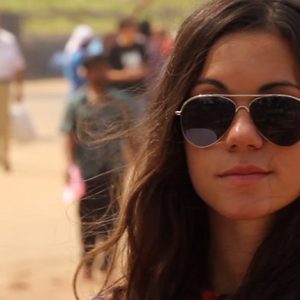
But then there’s the story itself. To give you a very quick summary, it’s a story of an aide worker who goes to India in the wake of the Asian tsunami and she discovers her stepfather there. She used to live in India when she was a child, but she hadn’t been back for 15 years. She find the stepfather, who is haunted by the past, and soon discovers that there’s a big mystery around her mother’s death 15 years ago.
The rest of the story is really her finding out the answer to what’s happened to her mother and she enlists the help of the local policeman, for example, to do this.
As a story, it’s also set in two different timeframes. You’ve got 15 years separating the two parts of the story. As a book, you could write quite a lot about what happened in years in between, so there’s a lot of potential for writing a book around the Monsoon Tide story.
And, I suppose that one of the biggest things is that we made the film, Nick wrote the screenplay and he directed it. We worked with our own film to make the book. It’s not like somebody could go out there and just start cutting up any film and make a C-book. We had the rights to it.
HH: What was it like working together to create a seamless C-book for Monsoon Tide?
Nick: Well, we both knew the story, as well as each other, because Elsa had acted as my script editor throughout the writing process. Even though I’d written that screenplay, I really, when it came to the C-book, I wanted to have a different perspective. I wasn’t sure about writing it myself. There’s the fact that Elsa is a much better prose writer than I am. She seemed to be the logical choice. She knew the story, but she could also bring to the table some ideas around the movie, as well as her experience with the movie.
Elsa: Yeah, I mean, basically, we took 15 scenes from the film that we thought were very strong visually or pivotal points in the movie. I selected those and then I wrote 15 chapters in between those segments that joined them up, but also explored other parts of the story that weren’t in the film.
Basically, I would write a chapter and show Nick and Nick would sort of give his feedback. He would say, “That’s definitely the right lines,” or “I hadn’t thought of that. That’s quite interesting, yeah, keep that in there.” Most of the time we agreed and really, and then we obviously got other people who knew nothing about the story to view Monsoon Tide, the C-book. We had a website set up where they could look at it and we were able to see if they could follow the story in this format, whether it made sense to them, and they could. We thought, well, we must have done it right.
Nick: We must have done something right. [Laughs]
HH: [Laughs] Right. What has the public reaction to Monsoon Tide and C-books been like?
Nick: Well, it’s very, very early in the process. We can only talk about the reaction we had prior to launch where we had the test site and we got hundreds of people to come in to see it, to see if the thing worked. To see if they could flip from reading to watching, to reading to watching, because this was the biggest question mark for us, is it going to stutter the flow? Is it going to take you out of the story? Luckily, there was not one single person who flagged that up as a problem at all.
Our next thing was, let’s go get English teachers. In Britain we went to some English teachers to see what their reaction would be, because we didn’t have a clue whether they would like it, hate it, what are we doing, what are we doing to books, what are we doing?
Elsa: They really liked it.
Nick: They loved it! They said this is a great way to get reluctant readers into the kind of wonderful world of literature, whereas they hadn’t read before. It’s like when you read a big heavy book and you’ve got, after about 20, 30 pages, you know there’s some photographs there. It’s a visual treat to look forward to.
With our C-book, you have a short chapter to get through and then you have this visual treat where you’re transported to the time, the place, and that gives the reader incentive to read and the process is—they saw something in the process that they could really use. It really spurred us on.
Elsa: Now that we’ve sort of launched it, we’re really encouraged because we’ve had a lot of media interests. They’ve been furiously writing articles about the Cinematic Book and Monsoon Tide for lots of publications and we’ve been talking to people like you about the project.
Yeah, I think people are interested because it is something new and we think that it is a new way to experience story. Most people have kind of liked the idea, so that’s the feedback so far. But as Nick said before, it’s early days to see what the general reaction would be.
HH: Awesome. Well, that’s all the questions I’ve got. Anything you’d like to add?
Elsa: Well, I wanted to know, sort of, how do people access your—does this come out as a Podcast? What do you do with the interview?
HH: Well, I post it on YouTube and then I have it transcribed to put on my blog.
Elsa: What sort of people follow you?
HH: Technical people. Some of them really like—I bet of lot of them would like your idea of C-books.
Elsa: That’s good. If people are just—finally, to let you know, if people do want more information, we’ve got a website, which is cBooks.co. If people wanted to find out more, that would be the best place to find out more.
HH: Okay, I’ll go ahead and put a link to that in the video description.
Elsa: That’s great. It’s a real pleasure to talk to you.
Nick: Yeah, thank you.
Elsa: Thank you for calling us from over the pond! [Laughs]
HH: Thank you.


